Folate (also known as folic acid, vitamin B9, vitamin Bc, vitamin M, folacin, or pteroyl-L-glutamate) is a water-soluble vitamin in the B series, and as such, is needed for energy metabolism and plays a role in protein and fat metabolism, as well as maintaining the functionality of the nervous system. B vitamins are also needed to maintain a healthy liver, healthy skin, hair, and eyes, as well as normal embryonic growth.
Folate (or folic acid) specifically is essential for proper brain function and plays a role in mental and emotional health. It also works in conjunction with vitamin B6 and B12 to create red blood cells, and maintain healthy levels of the amino acid homocysteine in the blood, which has been linked to heart disease (though if as an indicator or cause is yet unknown).
Folate is especially important during pregnancy, infancy, and adolescence, so during phases of rapid growth. Insufficient Folate intake during the early stages of pregnancy (usually before pregnancy is diagnosed) can lead to neural tube birth defects, including cleft palate, spina bifida, and brain damage. Many countries like the U.S.A. have started adding folic acid to grain products, which has lead to a significant decrease in such birth defects.
Being water-soluble, it is stored in the liver and heart in small quantities, but excess amounts will be expelled quickly. This means we need an adequate, ongoing (daily) supply to keep B9 levels in the optimal range.
Note: The terms "Folate" and "folic acid" are often used interchangeably, but there is a difference. Folate comes from food sources, while folic acid is the synthetic form used in supplements.This article will cover the recommended intake levels, why we want to reach those levels, the dangers of overconsumption, and which foods are richest in Vitamin B9. As a twist, we sort foods by their nutrient to calorie ratios, as opposed to the more common per 100 gram values. This is because per calorie values correct for water content, and satiation, but more on that later.
Note that all recommended intake figures below are based on the needs of a 31 year old non-pregnant, non-lactating woman on a 2000 kilocalorie diet. Your personal requirements may differ (wildly). One way to figure out your individual needs, including calories per day, is the FooDosage Nutrition Calculator. It's free, by the way.
Recommended Folate Intake
The recommended intake range for Vitamin B9, as set by the National Academy of Sciences:Recommended minimum intake (RDA): 400 µg per day
Upper limit: 1000 µg
"The UL for folate applies to synthetic forms obtained from supplements and/or fortified foods."
Note that your personal requirements may differ depending on your age, sex, pregnancy-, and lactation status.
Special Considerations
"In view of evidence linking folate intake with neural tube defects in the fetus, it is recommended that all women capable of becoming pregnant consume 400 μg from supplements or fortified foods in addition to intake of food folate from a varied diet.
It is assumed that women will continue consuming 400 μg from supplements or fortified food until their pregnancy is confirmed and they enter prenatal care, which ordinarily occurs after the end of the periconceptional period— the critical time for formation of the neural tube."
Importance of an Adequate Folate Intake (Dangers of a Deficiency)
Severe Folate deficiencies are rare in western countries, but mild deficiencies do happen. Symptoms may include:
- Megaloblastic anemia, which causes weakness, fatigue, trouble concentrating, irritability, headache, heart palpitations, and shortness of breath.
- Glossitis
- Diarrhea
- Depression
- Confusion
- Fetal neural tube defects and brain defects (during pregnancy)
- Fatigue
- Gray hair
- Mouth sores
- Poor growth
- Swollen tonge
Groups at an Increased Risk of a Deficiency
Certain groups of people, for one reason or another, are statistically more likely to present a Folate deficiency and should be especially mindful of adequate (or increased) intakes and if in doubt, consult a medical professional. These include:- Teenage girls and women capable of becoming pregnant
- Black women
- People with disorders that lower nutrient absorption (such as celiac disease and inflammatory bowel disease)
- People with alcoholism
Risks of an Excessive Folic Acid Consumption (Side Effects)
As a water-soluble vitamin, excess B9 is usually expelled without complication. As opposed to fat soluble vitamins, liver toxicity is not a big danger.There is no evidence of adverse effects from the consumption of naturally occurring Folate in foods. Though data is limited, so caution may be warranted. There are however side effects associated with an excessive consumption of folic acid supplements:
- Masks the symptoms of a B12 deficiency
- Stomach problems
- Sleep problems
- Skin reactions
- Confusion
- Loss of appetite
- Nausea
- Seizures
Top 12 Folate Food Sources
The highest concentrations of Vitamin B9 are usually found in livers, dark leafy greens, some vegetables, and legumes.
Some choice examples of Folate rich foods:
Note that for this ranking, the foods were sorted by their nutrient/calorie contents, as opposed to the more common nutrient/gram sorting method. This is because per calorie values correct for water content, and satiation. Example: Butter may contain more Vitamin A than Spinach per 100 grams, but eating the 120 grams of spinach necessary to reach the minimum recommended amount of Vitamin A is by far more feasible (and recommendable) than to eat the 100 grams of butter required for the same amount of Vitamin A.
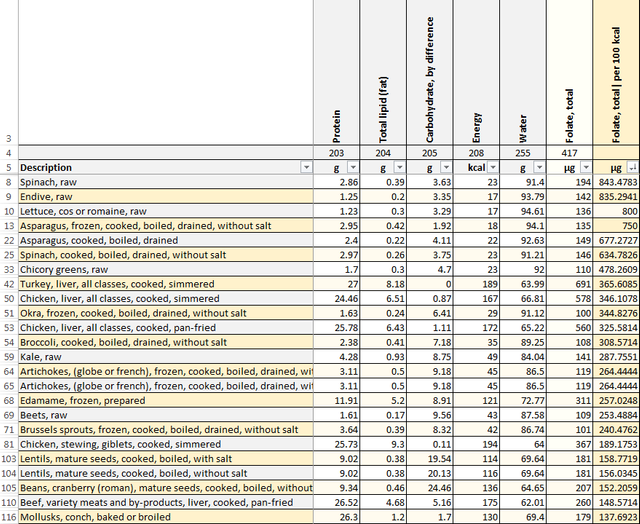 Folate Leaderboard – FooDosage Nutrition Calculator
Folate Leaderboard – FooDosage Nutrition Calculator
Endive
Folate (B9) per 100g (raw): 142 µg (36% of recommended minimum intake.)
Folate (B9) per 100 kcal: 835 µg (Corrects for water content and satiation.)

Calories per 100g: 17 kcal
I’ll be honest with you. I don’t like endive very much. Mainly because I cannot stand even the slightest bitter tastes at all. But many people love it in salads, and the nutritional value of endive is on their sides. For example: It contains the highest amount of Folate per 100 calories of any palatable food (yeast has even more).
Endive is also a great source of:
- Vitamin K – at 231 µg / 100g (257% of RMI)
- Manganese – at 0.42 mg / 100g (23% of RMI)
- Pantothenic Acid (B5) – at 0.9 mg / 100g (18% of RMI)
- Vitamin A – at 108 µg / 100g (15% of RMI)
- Dietary Fiber – at 3.1 g / 100 g (13% of RMI)
Asparagus
Folate (B9) per 100g (frozen, boiled): 135 µg (34% of recommended minimum intake.)Folate (B9) per 100 kcal: 750 µg (Corrects for water content and satiation.)
Calories per 100g: 22 kcal
Ah, asparagus. A great option to lose weight, gain Folate, and nauseate whomever uses the bathroom after you at the same time. Considering the calorie count, asparagus also contains a fair amount of dietary fiber (2 g).
Asparagus is also a great source of:
- Vitamin K – at 80 µg / 100g (89% of RMI)
- Vitamin C – at 24.4 mg / 100g (33% of RMI)
- Copper – at 0.11 mg / 100g (12% of RMI)
- Riboflavin (B2) – at 0.1 mg / 100 g (9% of RMI)
Spinach
Folate (B9) per 100g (boiled): 142 µg (71% of recommended minimum intake.)Folate (B9) per 100 kcal: 635 µg (Corrects for water content and satiation.)
Calories per 100g: 23 kcal
Spinach truly is one of the healthiest foods on earth, and deserves the label "super food". It has already appeared many times on our leaderboards and probably will many more. In addition to its nutrient contents, it's also tasty, easy to prepare, and relatively cheap. A perfect side dish for salmon, another charts leader.
Spinach is also an excellent source of:
- Vitamin K – at 493 µg / 100g (548% of RMI)
- Vitamin A – at 524 µg / 100g (75% of RMI)
- Manganese – at 0.94 mg / 100g (52% of RMI)
- Magnesium – at 87 mg / 100g (27% of RMI)
Turkey Liver
Folate (B9) per 100g (boiled): 691 µg (71% of recommended minimum intake.)Folate (B9) per 100 kcal: 365 µg (Corrects for water content and satiation.)
Calories per 100g: 189 kcal
As is the case for many nutrients, livers in general are extremely dense in Folate, and turkey livers take the crown. It's not the worst idea to incorporate a bit of liver into your diet, but beware:
Apart from Folate, liver is so rich in vitamin A, that you should only eat small amounts to not exceed the upper limit. Since Vitamin A is fat soluble, this can be taken as a weekly average.
But Vitamin A is not the only reason to limit liver consumption to very small amounts. Heavy metals such as arsenic, cadmium and lead, as well as pesticides tend to collect in farm animals’ livers. Try to only buy organic meat to get “cleaner” livers, apart from all the other arguments for buying organic foods in general.
Turkey liver is also a fantastic source of:
- Vitamin A – at 10751 µg / 100g (1536% of RMI. WARNING: The upper limit is 3000 µg.)
- Cyanocobalamin (B12) – at 28.2 µg / 100g (1174% of RMI)
- Riboflavin (B2) – at 2.69 mg / 100 g (244% of RMI)
- Selenium – at 102 µg / 100g (186% of RMI)
- Copper – at 1.05 mg / 100 g (116% of RMI)
- Protein – at 27 g / 100g (55% of RMI)
Okra
Folate (B9) per 100g (frozen, boiled): 100 µg (25% of recommended minimum intake.)Folate (B9) per 100 kcal: 345 µg (Corrects for water content and satiation.)
Calories per 100g: 29 kcal
Okra may not exactly be the most exciting of veggies, but they do help with achieving our daily B9 levels and are rich in other nutrients as well. Well featured in many southern recipes, the mild tasting okra benefits from strong/hot spices. Prepare for a slimy texture when cooked. Also known as bhindi or lady’s fingers.
Okra is also a good source of:
- Vitamin K – at 47.8 µg / 100g (53% of RMI)
- Manganese – at 0.84 mg / 100g (47% of RMI)
- Vitamin C – at 9.6 mg / 100g (13% of RMI)
- Magnesium – at 40 mg / 100g (13% of RMI)
Broccoli
Folate (B9) per 100g (boiled): 108 µg (27% of recommended minimum intake.)Folate (B9) per 100 kcal: 309 µg (Corrects for water content and satiation.)
Calories per 100g: 35 kcal
A cruciferous vegetable, broccoli makes for a very healthy side dish to a variety of main courses, and (when farmed locally) a much more ecological source of vitamin C than orange juice. Sprinkled with parmesan, it’s also delicious.
Broccoli is also a great source of:
- Vitamin K – at 141 µg / 100g (157% of RMI)
- Vitamin C – at 64.9 mg / 100g (87% of RMI)
- Vitamin B6 – at 0.2 mg / 100g (15% of RMI)
- Pantothenic Acid (B5) – at 0.62 mg / 100g (12% of RMI)
Artichoke
Folate (B9) per 100g (frozen, boiled): 119 µg (30% of recommended minimum intake.)Folate (B9) per 100 kcal: 264 µg (Corrects for water content and satiation.)
Calories per 100g: 45 kcal
Artichokes are actually the flower buds of an enormous kind of thistle, and quite beautiful in bloom, though they have to be harvested before that point lest they become unpalatable. Some people also like their taste. They are certainly a great source of fiber and B9.
Artichokes are also a good source of:
- Dietary Fiber – at 4.6 g / 100 g (19% of RMI)
- Manganese – at 0.27 mg / 100g (15% of RMI)
- Vitamin K – at 12.6 µg / 100g (14% of RMI)
- Riboflavin (B2) – at 0.16 mg / 100 g (14% of RMI)
Edamame
Folate (B9) per 100g (frozen, cooked): 311 µg (78% of recommended minimum intake.)Folate (B9) per 100 kcal: 257 µg (Corrects for water content and satiation.)
Calories per 100g: 121 kcal
Edamame is what you get when you prepare immature soybeans in their pods. In east asian cuisines, they are boiled and served with salt, or boiled in salt water. As can be expected, they also contain a fair bit of protein, at 11.9 grams per hundred (24% RMI), though only at a 85% completeness score, as they are lacking in the amino acids Methionine & Cysteine and Valine. Their fiber contents are uncompromisingly good though: 5.2 g / 100 g (21%)
Edamame is also a good source of:
- Manganese – at 1.02 mg / 100g (57% of RMI)
- Copper – at 0.35 mg / 100g (38% of RMI)
- Vitamin K – at 26.7 µg / 100g (30% of RMI)
Brussles Sprouts
Folate (B9) per 100g (frozen, boiled): 101 µg (25% of recommended minimum intake.)Folate (B9) per 100 kcal: 240 µg (Corrects for water content and satiation.)
Calories per 100g: 42 kcal
Ah, brussels sprouts. Like garlic to a vampire, you can chase me out of a room with them. The mere smell makes me gag. Which is a shame, as they are a very nutritionally valuable food and come with a good helping of dietary fiber (4.1 g / 100 g, 17%). But I’ll stick to spinach. Enjoy 🙂
Brussles sprouts are also a great source of:
- Vitamin K – at 194 µg / 100 g (215% of RMI)
- Vitamin C – at 45.7 mg / 100g (61% of RMI)
- Vitamin B6 – at 0.29 mg / 100g (22% of RMI)
Lentils
Folate (B9) per 100g (boiled): 181 µg (45% of recommended minimum intake.)Folate (B9) per 100 kcal: 159 µg (Corrects for water content and satiation.)
Calories per 100g: 114 kcal
Mmmmh, Lentils. One of my favorite and most often consumed foods. I'm happy to report they are not only delicious, but also rich in many nutrients. Among them Folate, and a very good amount of fiber (7.9 g / 100 g, 32%)
Lentils are also a great source of:
- Copper – at 0.25 mg / 100g (28% of RMI)
- Manganese – at 0.5 mg / 100g (27% of RMI)
- Phosphorus – at 180 mg / 100g (26% of RMI)
- Iron – at 3.33 mg / 100g (19% of RMI)
Cranberry Beans
Folate (B9) per 100g (boiled): 207 µg (71% of recommended minimum intake.)Folate (B9) per 100 kcal: 152 µg (Corrects for water content and satiation.)
Calories per 100g: 136 kcal
Like lentils, cranberry beans (also called borlotti beans) are one of my favorite foods. Especially if fried with bacon and cooked again in tomato sauce and little chunks of mozzarella added at the end...
Apart from Folate, they also contain an excellent amount of fiber (8.6 g / 100 g, 35%) and complete protein (9.3 g / 100 g, 19%).
Cranberry beans are also a good source of:
- Copper – at 0.23 mg / 100g (26% of RMI)
- Manganese – at 0.37 mg / 100g (21% of RMI)
- Phosphorus – at 134 mg / 100g (19% of RMI)
- Iron – at 3.33 mg / 100g (19% of RMI)
- Thiamin (B1) – at 0.21 mg / 100g (19% of RMI)
Conch
Folate (B9) per 100g (boiled): 179 µg (45% of recommended minimum intake.)Folate (B9) per 100 kcal: 137 µg (Corrects for water content and satiation.)
Calories per 100g: 130 kcal
And now for something completely different! Conch meat is a prominent part of the Bahamas cuisine and is eaten raw in salads, fried, baked, grilled, you name it. It may not exactly be widely available where you live, but if you get a chance, try it. Your Folate and B12 levels will thank you, as will you palate (hopefully).
Conch meat is also an excellent source of:
- Cyanocobalamin (B12) – at 5.25 µg / 100g (219% of RMI)
- Magnesium – at 238 mg / 100g (74% of RMI)
- Selenium – at 40.3 µg / 100g (73% of RMI)
- Copper – at 0.44 mg / 100g (48% of RMI)
- Vitamin E – at 6.33 mg / 100g (42% of RMI)
Bonus "per 100 grams" leader: Turkey Liver
Ooops, we already had that. I like to include the per 100 grams leader for comparison purposes, but in the case of Folate, turkey liver is also among the top per 100 calorie foods, which you could say confirms it as a great choice. Edamame also does very well in the per calorie ranking.
For the original, full, and up to date article, visit foodosage.com
Bon Appetit :-)
Sources:
http://www.nationalacademies.org/hmd/Activities/Nutrition/SummaryDRIs/DRI-Tables.aspx
https://ods.od.nih.gov/factsheets/Folate-Consumer/
http://www.umm.edu/health/medical/altmed/supplement/vitamin-b9-folic-acid
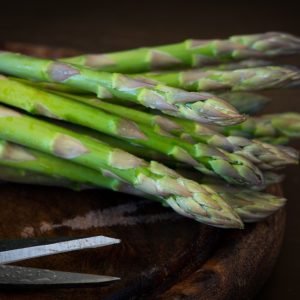
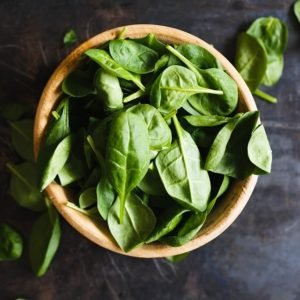

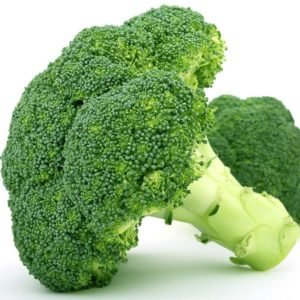
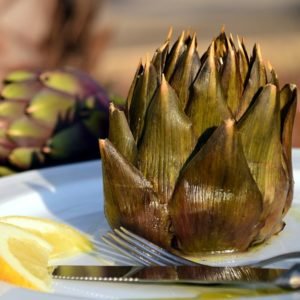
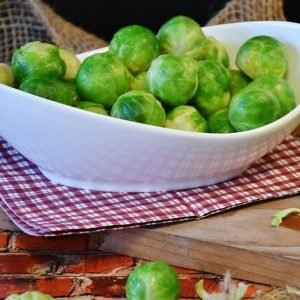
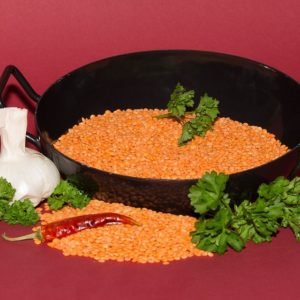
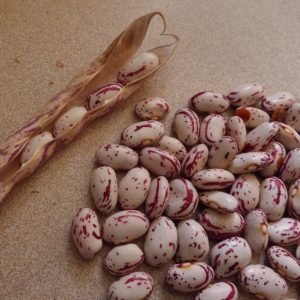
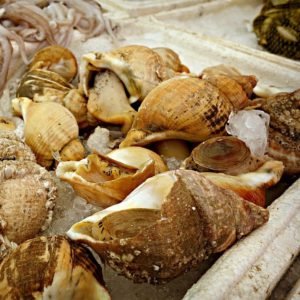
This post received a 1.2% upvote from @randowhale thanks to @ponimayu! For more information, click here!
Downvoting a post can decrease pending rewards and make it less visible. Common reasons:
Submit
Hi! I am a robot. I just upvoted you! I found similar content that readers might be interested in:
http://www.foodosage.com/folate-vitamin-b9-top-food-sources-rda-dangers-side-effects/
Downvoting a post can decrease pending rewards and make it less visible. Common reasons:
Submit
Yep, as disclosed (also my site).
Downvoting a post can decrease pending rewards and make it less visible. Common reasons:
Submit